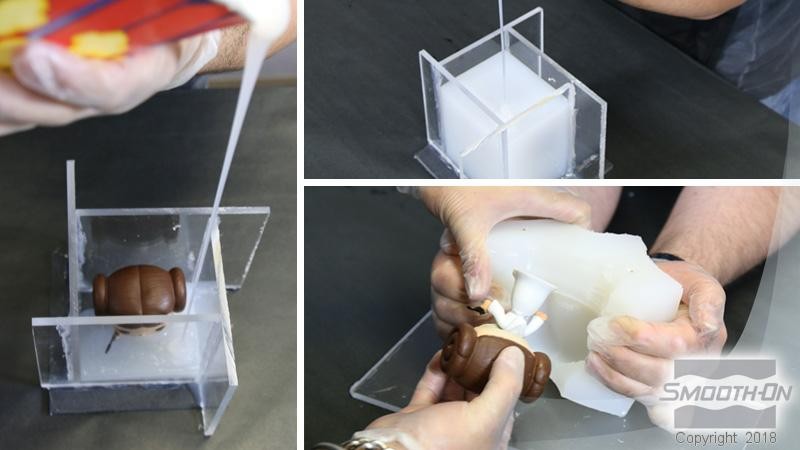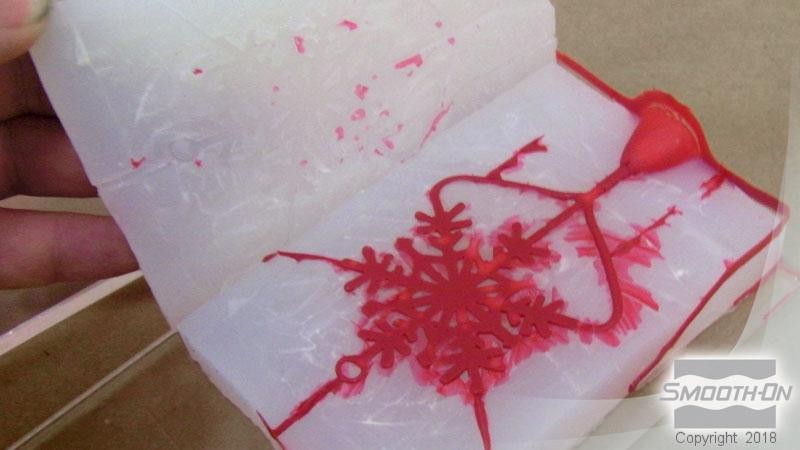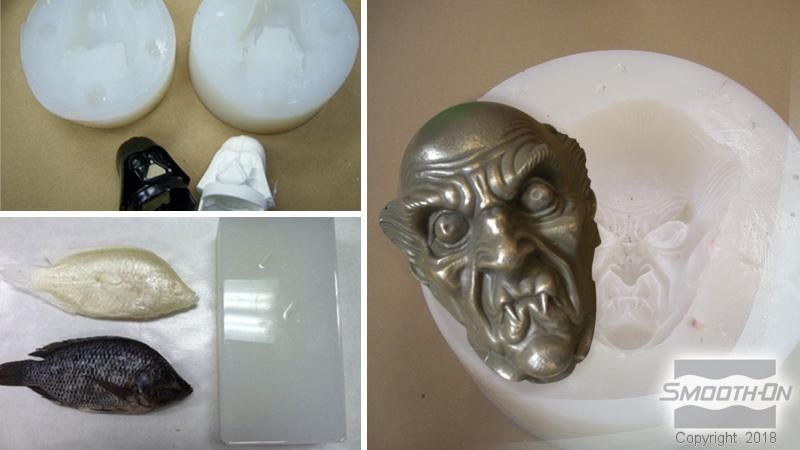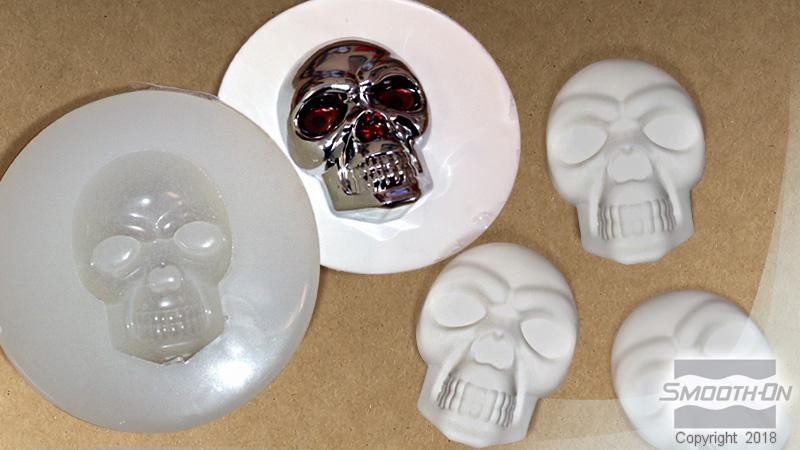Mold Star 40T
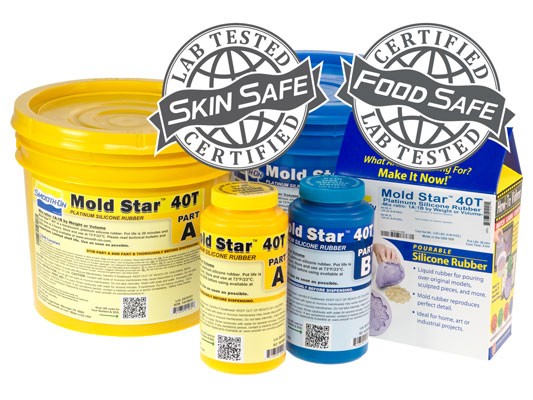
Mold Star™ 14T、19T、20T、31T和40T是易于使用的半透明铂催化固化硅胶,按体积比1A:1B混合(无需使用秤)。它们的粘度相对较低,在大多数应用中无需进行真空脱气处理。Mold Star™ T系列硅胶固化后会形成柔软、坚韧且抗撕裂的橡胶,长期收缩率极低。用Mold Star™硅胶制作的模具在您的模具库中可以长期使用,适用于浇注蜡、石膏、树脂及其他材料。通过添加Silc Pig™硅胶颜料或Cast Magic™特效粉末,能实现无数种色彩效果。
充分固化的Mold Star™ 40T符合美国联邦法规第21章177.2600条款“预期重复使用的橡胶制品”的要求,仅适用于与干态食品和水性食品接触。该材料已由独立实验室检测,符合21 CFR 177.2600(e)中关于在水性食品中重复使用的水可萃取物限量标准。此材料不适用于与高脂肪食品重复接触。
充分固化的Mold Star™ 40T符合美国联邦法规第21章177.2600条款“预期重复使用的橡胶制品”的要求,仅适用于与干态食品和水性食品接触。该材料已由独立实验室检测,符合21 CFR 177.2600(e)中关于在水性食品中重复使用的水可萃取物限量标准。此材料不适用于与高脂肪食品重复接触。
特征
Mold Star™ T系列硅胶耐热温度高达450°F(232°C),适用于浇注低温熔融合金。
注意:即使经过密封处理,本产品也不会在含硫的表面上固化。
Mold Star™ T系列硅胶固化后,经独立实验室检测并认证对皮肤安全。
Mold Star™ 40T可安全接触干态食品,也适用于与水/冰接触。
说明
PREPARATION...
Safety - Use in a properly ventilated area (“room size” ventilation). Wear safety glasses, long sleeves and rubber gloves to minimize contamination risk. Wear vinyl gloves only. Latex gloves will inhibit the cure of the rubber. Mixing containers should have straight sides and a flat bottom. Mixing sticks should be flat and stiff with defined edges for scraping the sides and bottom of your mixing container.
Store and use material at room temperature (73°F/23°C). Warmer temperatures will drastically reduce working time and cure time. Storing material at warmer temperatures will also reduce the usable shelf life of unused material. These products have a limited shelf life and should be used as soon as possible.
Cure Inhibition - Addition cured silicone rubber may be inhibited by certain contaminants in or on the pattern to be molded resulting in tackiness at the pattern interface or a total lack of cure throughout the mold. Latex, sulfur clays, certain wood surfaces, newly cast polyester, epoxy, tin cure silicone rubber or urethane rubber my cause inhibition. If compatibility between the rubber and the surface is a concern, a small-scale test is recommended. Apply a small amount of rubber onto a non-critical area of the pattern. Inhibition has occurred if the rubber is gummy or uncured after the recommended cure time has passed. To prevent inhibition, one or more coatings of a clear acrylic lacquer applied to the model surface is usually effective. Allow any sealer to thoroughly dry before applying rubber.
Even with a sealer, Mold Star™ 14T, 19T, 20T 31T or 40T will not cure against surfaces containing sulfur. If you are not sure if your clay contains sulfur, do a small compatibility test before using for an important project.
Applying A Release Agent - Although not usually necessary, a release agent will make demolding easier when casting into most surfaces. Ease Release™ 200 is a proven release agent for releasing silicone from silicone or other surfaces. Mann Ease Release™ products are available from Smooth-On or your Smooth-On distributor. Because no two applications are quite the same, a small test application to determine suitability for your project is recommended if performance of this material is in question.
MEASURING & MIXING...
Stir Part A and Part B thoroughly before dispensing. After dispensing required amounts of Parts A and B into mixing container (1A:1B by volume or weight), mix thoroughly making sure that you scrape the sides and bottom of the mixing container several times.
Optional... Vacuum Degassing - Although not necessary, vacuum degassing helps eliminate any entrapped air in pourable silicone rubber. After mixing parts A and B, vacuum material at 29 inches of mercury, making sure that you leave enough room in container for product expansion.
POURING, CURING & PERFORMANCE...
Pouring - For best results, pour your mixture in a single spot at the lowest point of the containment field. Let the rubber seek its own level. A uniform flow will help minimize entrapped air. If using as a mold material, the liquid rubber should level off at least 1/2” (1.3 cm) over the highest point of the model surface.
Curing - Allow rubber to cure as prescribed at room temperature (73°F/23°C) before demolding. Do not cure rubber where temperature is less than 65°F/18°C.
Heat Curing - Time to demold can be reduced with mild heat. Example: After pouring Mold Star™ 14T, 19T, 20T 31T or 40T at room temperature, place the mold in a hot box or industrial oven at 140°F (60°C). This may reduce the demold time substantially. Note - time will vary depending on mold thickness.
Making a Brush On Mold? - Mold Star™ T Series silicones can be thickened with Thi-Vex™ thickener for brush-on application and effects. Maximum recommended loading rate of Thi-Vex™ is 2 parts (2% of part A). Do not use other Mold Star™ Series silicones for brush on mold making.
Mold Performance & Storage - The physical life of the mold depends on how you use it (materials cast, frequency, etc.). Casting abrasive materials can quickly erode mold detail, while casting non-abrasive materials (wax) will not affect mold detail. Before storing, the mold should be cleaned with a soap solution and wiped fully dry. Two part (or more) molds should be assembled. Molds should be stored on a level surface in a cool, dry environment.
Safety - Use in a properly ventilated area (“room size” ventilation). Wear safety glasses, long sleeves and rubber gloves to minimize contamination risk. Wear vinyl gloves only. Latex gloves will inhibit the cure of the rubber. Mixing containers should have straight sides and a flat bottom. Mixing sticks should be flat and stiff with defined edges for scraping the sides and bottom of your mixing container.
Store and use material at room temperature (73°F/23°C). Warmer temperatures will drastically reduce working time and cure time. Storing material at warmer temperatures will also reduce the usable shelf life of unused material. These products have a limited shelf life and should be used as soon as possible.
Cure Inhibition - Addition cured silicone rubber may be inhibited by certain contaminants in or on the pattern to be molded resulting in tackiness at the pattern interface or a total lack of cure throughout the mold. Latex, sulfur clays, certain wood surfaces, newly cast polyester, epoxy, tin cure silicone rubber or urethane rubber my cause inhibition. If compatibility between the rubber and the surface is a concern, a small-scale test is recommended. Apply a small amount of rubber onto a non-critical area of the pattern. Inhibition has occurred if the rubber is gummy or uncured after the recommended cure time has passed. To prevent inhibition, one or more coatings of a clear acrylic lacquer applied to the model surface is usually effective. Allow any sealer to thoroughly dry before applying rubber.
Even with a sealer, Mold Star™ 14T, 19T, 20T 31T or 40T will not cure against surfaces containing sulfur. If you are not sure if your clay contains sulfur, do a small compatibility test before using for an important project.
Applying A Release Agent - Although not usually necessary, a release agent will make demolding easier when casting into most surfaces. Ease Release™ 200 is a proven release agent for releasing silicone from silicone or other surfaces. Mann Ease Release™ products are available from Smooth-On or your Smooth-On distributor. Because no two applications are quite the same, a small test application to determine suitability for your project is recommended if performance of this material is in question.
MEASURING & MIXING...
Stir Part A and Part B thoroughly before dispensing. After dispensing required amounts of Parts A and B into mixing container (1A:1B by volume or weight), mix thoroughly making sure that you scrape the sides and bottom of the mixing container several times.
Optional... Vacuum Degassing - Although not necessary, vacuum degassing helps eliminate any entrapped air in pourable silicone rubber. After mixing parts A and B, vacuum material at 29 inches of mercury, making sure that you leave enough room in container for product expansion.
POURING, CURING & PERFORMANCE...
Pouring - For best results, pour your mixture in a single spot at the lowest point of the containment field. Let the rubber seek its own level. A uniform flow will help minimize entrapped air. If using as a mold material, the liquid rubber should level off at least 1/2” (1.3 cm) over the highest point of the model surface.
Curing - Allow rubber to cure as prescribed at room temperature (73°F/23°C) before demolding. Do not cure rubber where temperature is less than 65°F/18°C.
Heat Curing - Time to demold can be reduced with mild heat. Example: After pouring Mold Star™ 14T, 19T, 20T 31T or 40T at room temperature, place the mold in a hot box or industrial oven at 140°F (60°C). This may reduce the demold time substantially. Note - time will vary depending on mold thickness.
Making a Brush On Mold? - Mold Star™ T Series silicones can be thickened with Thi-Vex™ thickener for brush-on application and effects. Maximum recommended loading rate of Thi-Vex™ is 2 parts (2% of part A). Do not use other Mold Star™ Series silicones for brush on mold making.
Mold Performance & Storage - The physical life of the mold depends on how you use it (materials cast, frequency, etc.). Casting abrasive materials can quickly erode mold detail, while casting non-abrasive materials (wax) will not affect mold detail. Before storing, the mold should be cleaned with a soap solution and wiped fully dry. Two part (or more) molds should be assembled. Molds should be stored on a level surface in a cool, dry environment.
